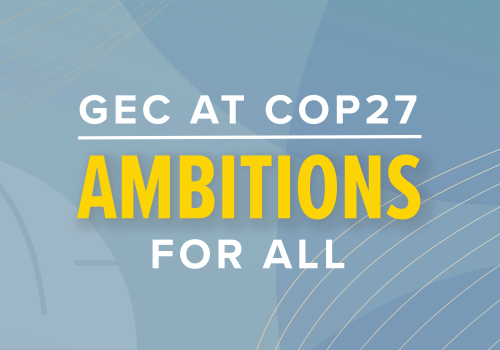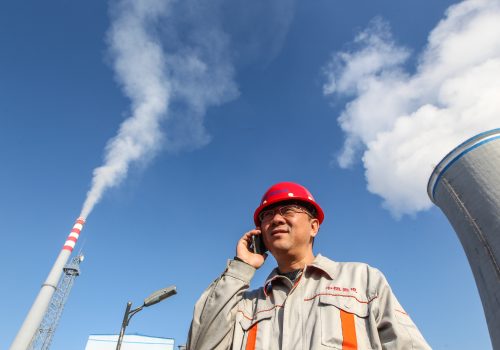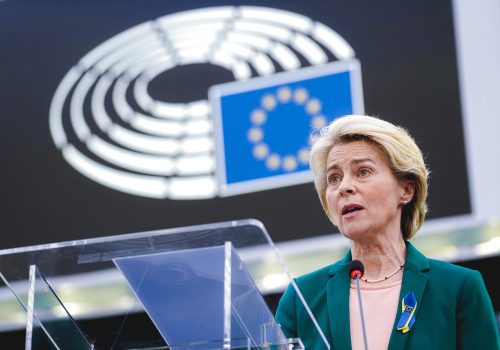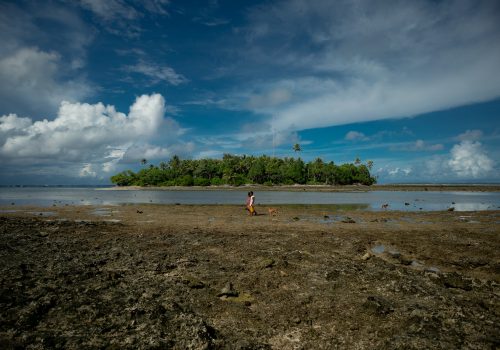The war in Ukraine has created significant momentum for the European Union (EU) to diversify its energy sources and become independent from Russian oil and gas. In the short term, some of its major member states are striving to secure alternative supplies—mostly from the MENA region, the United States, a few African countries, and Azerbaijan—by increasing gas supplies both via existing pipelines and through LNG shipments.
However, the EU faces the challenge of establishing a new model of energy security, stable over the longer term and in line with its ambitious climate goals, as detailed in the EU Green Deal and in Fit for 55.
Even before the COVID and Ukraine crises, the idea of forging a new model of energy interdependence between the EU and North Africa was in the works, whereby the latter would be well suited to produce and export renewable energy, including green hydrogen. Vice President of the European Commission Frans Timmermans has consistently been a staunch advocate of such a vision.
For their part, several MENA countries have supported substantial growth over the last few years in the development of renewables, blue and green ammonia, and blue and green hydrogen in particular.
COP27 will likely provide additional impetus for renewed debates and initiatives in this field, with a view to promoting further investments in renewable energy in the MENA region as well as in interconnections with European markets.
Some exports of low-carbon products are already taking place by ship, as in the case of ammonia, a hydrogen-rich molecule that is often used in fertilizer but can also serve as a carbon-free fuel. Another way to transport hydrogen would be through existing gas pipelines, either blended with gas or on its own after conversion and refitting. North Africa and Europe are currently connected through a few gas pipelines, from Algeria and Libya to Italy and Spain.
There are also proposals, among some regional and international investors, on future development of dedicated hydrogen pipelines. According to some visions, even Saudi Arabia could be connected to Europe through this channel.
Another tactic for further strengthening EU-MENA energy cooperation would rely on interconnectors that convey renewable electricity. Egypt, Cyprus, and Greece have been working on such a project for some time, as have Italy and Tunisia.
Such models are not mutually exclusive, as diversification among them would bolster energy security.
There are, however, hurdles on the path toward such a new pattern of interdependence, especially in terms of the structure of expected demand for green hydrogen, the costs of production, and the scale of the investments required.
A recent report from the International Energy Agency (IEA) and other agencies highlights that to achieve a Paris-aligned pathway on a global scale, the supply of renewable and low-carbon hydrogen would need to increase from less than 1 million tons per year in 2020 to 140-155 million tons per year in 2030. This implies that production capacity would need to double every year from 2023 to 2030. In parallel, the production cost of renewable hydrogen would need to fall by 40-55 percent over the course of this decade, to almost $1 per kilogram in the most favorable locations.
According to the same source, the scale of investments required globally is equally enormous: “Hydrogen deployment consistent with a 1.5ºC-aligned pathway will require an annual investment of around USD 60-130 billion through to 2030, relative to the less than USD 1 billion invested annually, on average, over the last decade.”
However, the vicious circle of demand creation might be broken, on a regional scale, by the EU itself, as implied most recently by the REPowerEU plan. The proposal includes a production target of 10 million tons of green hydrogen by 2030 within the EU and the import of an additional 10 million tons through three corridors, one of which would run through the Mediterranean.
The scale of investments required globally is huge indeed: some sources estimate $7-8 trillion across the hydrogen value chain will be needed through 2050. This figure, however, would be comparable to investments of $5.7 trillion made in upstream oil and gas in the past decade.
Research and innovation in technology would most likely lead to a reduction in the costs of production, especially for electrolyzers. Several scenarios have been propounded on the possible evolution, throughout the current decade, of electrolyzer cost and of hydrogen transport. Under certain conditions that would lead to a decrease in costs, importing renewable hydrogen from North Africa by 2030 could become an economically attractive option for Europe.
Transport of renewable hydrogen (as complementary to onsite production) is a key factor in its future potential. Much will depend on renewable electricity generation cost differences and on the volume of investments required for developing adequate infrastructure (repurposing of pipelines, compressors, storage capacity, etc.). According to some analyses, for distances up to 3,000 kilometers, compressed hydrogen gas appears to be the cheapest option, particularly in the case of pipelines.
The plans underway throughout the MENA region are encouraging, even in light of continued insistence by some countries in the region to sustain new investments in oil and gas.
In the end, North African countries would have much to gain from a new energy interrelationship with Europe, with the possibility of retaining part of the production for their own markets and of benefiting from job creation, skills development, know-how, and a transition to a low-carbon economy.
The time has come for the governments of the wider Mediterranean, besides the EU institutions, to play a more active role, by developing an appropriate regulatory framework, optimizing public and private resources, and designing a long-term strategy of energy partnership with the aim of achieving broader goals of stability, growth, and transition to carbon neutrality by mid-century.
COP27 should provide the appropriate context for further advancing the development of renewable energy in all its aspects, including research, infrastructure, and transport modalities, as well as production. Climate goals can only be achieved on the basis of concrete plans and investment decisions, which should be be made as early as possible.
Giampaolo Cantini is a nonresident senior fellow at the Atlantic Council Global Energy Center.
Meet the author
Related content
Learn more about the Global Energy Center

The Global Energy Center develops and promotes pragmatic and nonpartisan policy solutions designed to advance global energy security, enhance economic opportunity, and accelerate pathways to net-zero emissions.
Image: A man installs solar panels in Egypt. (Mark Mühlhaus, Windwärts Energie GmbH, CC BY-NC-ND 2.5) https://creativecommons.org/licenses/by-nc-nd/2.5/





